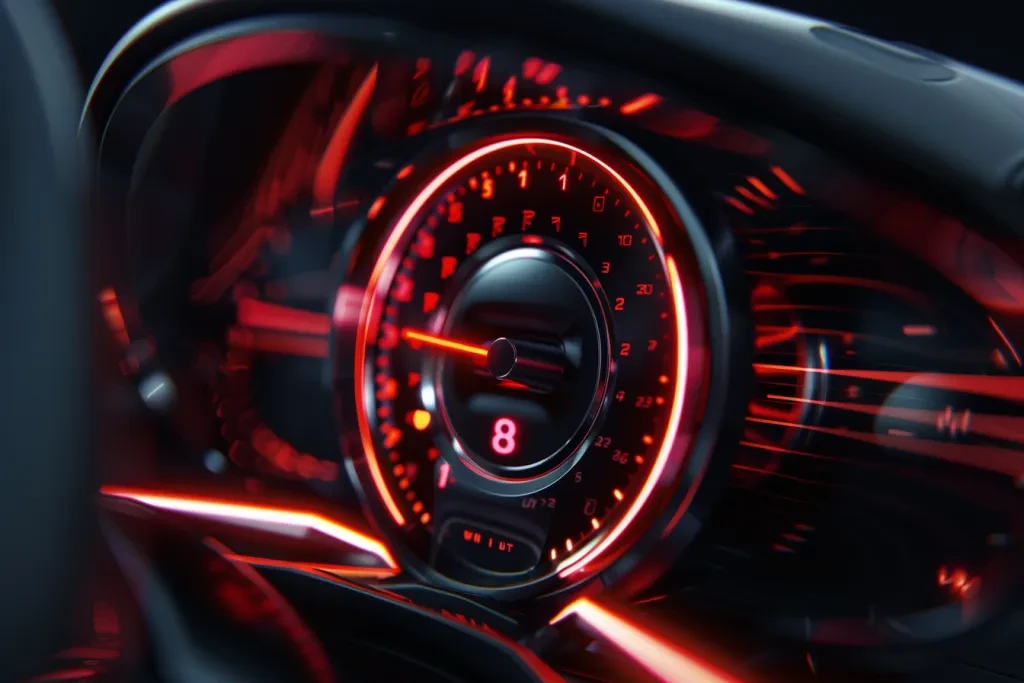
How to Wire a 2 Wire Tachometer for Your Project?
Share
If you're diving into the world of automobile electronics or home machinery, understanding how to wire a 2 wire tachometer can open doors to more efficient and informed operations. Tachometers are essential instruments for measuring the rotational speed of a component, usually in revolutions per minute (RPM). In this article, we will discuss the wiring process, important considerations, and some related topics that tech professionals and enthusiasts should be aware of.
A tachometer can be an incredibly valuable tool for any technician or hobbyist working with engines or motors. Not only does it provide critical information about the engine's performance, but it also helps in optimizing and diagnosing issues that may arise. Lets get into how to wire this essential device.

What is a 2 Wire Tachometer?
A 2 wire tachometer is a specific type of tachometer that requires only two connections: one for the power source and another for the signal. This simplicity can make it particularly useful in various applications, especially when space and simplicity are a concern.
Essential Components Needed
Before you begin, gather the following components:
- Tachometer
- Wires
- Power Source (Battery or Ignition)
- Wire Connectors
- Tools (Wire Stripper, Soldering Iron)
Step-by-Step Wiring Guide
Now that you have everything ready, lets move on to the wiring process.
1. Identify the Wires
Locate the two wires on your tachometer. One is typically colored **red** (for power) and the other is **black** (for the ground). Familiarity with these wire conventions is key when wiring electronic components.
2. Connect the Power Wire
Connect the **red** wire from the tachometer to your power source. This can be done by splicing the wire and using a connector to ensure a secure connection.
3. Connect the Ground Wire
The **black** wire should be connected to the ground of your power source. Proper grounding is crucial for preventing electrical issues during operation.
4. Secure the Connections
Once you have made the connections, it's essential to secure them using wire connectors or soldering. Ensuring solid connections helps to prevent future issues.
5. Test the Tachometer
After wiring, turn on the power source and observe whether the tachometer displays readings. If successful, you should see a changing RPM based on the engine speed.
Things to Keep in Mind
Wiring a 2 wire tachometer may seem straightforward, but here are some important tips to ensure everything functions correctly:
- **Check Compatibility**: Ensure that the tachometer is compatible with your engine or application.
- **Power Requirements**: Check the voltage and current requirements to avoid damaging your tachometer.
- **Calibration**: Some tachometers require calibration to provide accurate readings.
Where to Use a Tachometer?
Tachometers are utilized in various fields, including:
- Automobile Engines
- Motorcycles
- Industrial Machinery
- Golf Carts
For more detailed instructions on installing a tachometer in a golf cart, you can check this article on golf carts.
Common Issues and Troubleshooting
Here are some potential issues you may run into when wiring your tachometer:
- Inaccurate Readings: Ensure proper calibration and connections.
- No Power: Verify the power source and connections.
- Signal Loss: Inspect the signal wire for damage or secure connections.
Conclusion
Learning how to wire a 2 wire tachometer is a crucial skill for tech professionals and enthusiasts alike. Mastery in this area not only enhances your understanding of engine performance but also equips you with the technical proficiency to troubleshoot and maintain various machinery.
If you're looking for more resources on tachometers, check out this Wikipedia article.

FAQ Section
1. Can I use a 2 wire tachometer on a 4-stroke engine?
Yes, as long as it is compatible and properly calibrated, a 2 wire tachometer can be used on a variety of engines.
2. What happens if I wire the tachometer incorrectly?
If wired incorrectly, it may not function correctly or could potentially damage the tachometer or other electronic components.
3. Do I need any specialized tools to wire a tachometer?
While basic tools are sufficient, having a soldering iron and a wire stripper can make the job easier and more reliable.
